Overview
The article underscores the pivotal role of ion-selective electrodes (ISEs) in laboratory environments, emphasizing their precision in measuring specific ions and their wide-ranging applications. ISEs are indispensable for obtaining accurate data across critical fields such as pharmaceuticals, environmental monitoring, and clinical diagnostics. Their robust design, coupled with continuous technological advancements, enhances their reliability and usability in diverse sectors. As innovations continue to shape the future of ISEs, it is essential to recognize their significance in ensuring high-quality scientific measurements.
Introduction
The realm of laboratory analysis increasingly relies on precision tools, with ion-selective electrodes (ISEs) emerging as indispensable instruments for measuring specific ions in various solutions. This article explores ten key insights surrounding ISEs, emphasizing their critical role across sectors such as pharmaceuticals, environmental monitoring, and clinical diagnostics. As the demand for accurate and reliable measurements escalates, so too do the challenges related to ionic interference and calibration. What innovations and strategies can laboratories adopt to enhance the efficacy of these vital sensors? This inquiry is essential for advancing the capabilities of laboratory analysis.
JM Science Ion-Selective Electrodes: Precision in Measurement
JM Science Inc. presents a comprehensive array of high-quality ion selective electrodes, which are indispensable for the accurate measurement of specific ions across various solutions. These sensors are meticulously crafted to deliver reliable data, a necessity for laboratories engaged in pharmaceuticals, environmental monitoring, and medical diagnostics. The precision of JM Science's ion selective electrodes is bolstered by rigorous quality control measures, empowering researchers to trust the integrity of their analytical results.
The market for ion selective electrodes is projected to reach USD 2.19 billion by 2033, reflecting a growing demand driven by increasing environmental challenges and the need for advanced water quality monitoring solutions. Furthermore, the anticipated compound annual growth rate (CAGR) for the ion selective electrodes market stands at approximately 5.8%, indicating substantial growth potential that pharmaceutical lab managers should contemplate for future investments. In North America, the market size for ion selective electrodes is expected to hit USD 410 million in 2024, underscoring the critical role that ion selective electrodes play in the pharmaceutical sector.
Expert insights underscore the reliability of ion selective electrodes in pharmaceutical applications, where precise measurement of ions is vital for drug development and quality control. Recent innovations in ion selective electrodes technology, including miniaturized and biocompatible designs, are augmenting their applicability in clinical environments and environmental monitoring. For example, JM Science's ISEs have been successfully employed in environmental assessments, yielding essential data for evaluating water quality and ensuring adherence to regulatory standards. This dedication to innovation and excellence positions JM Science as a trusted ally in the scientific community, advancing research and healthcare initiatives.
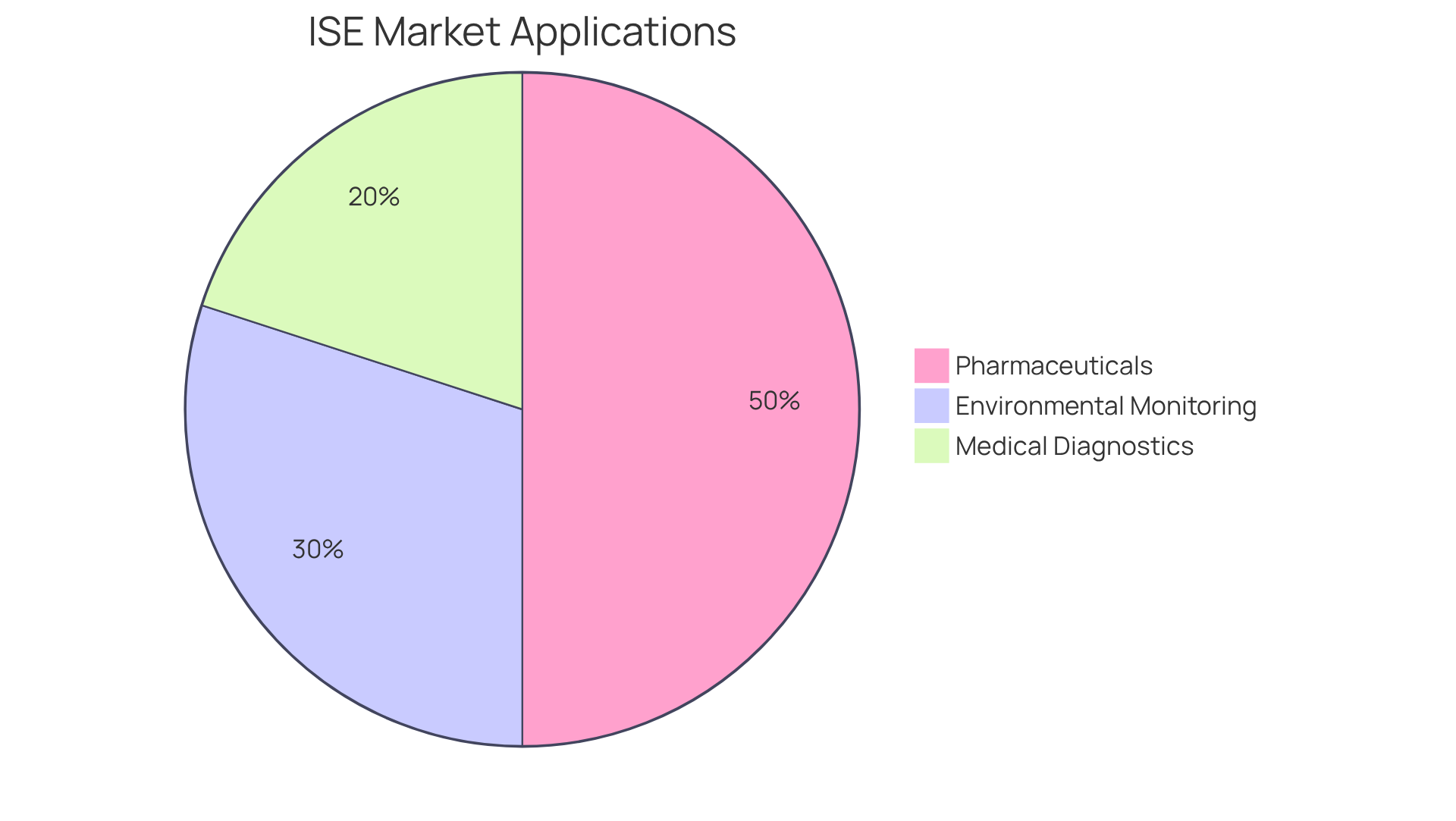
Fundamental Principles of Ion-Selective Electrodes: How They Work
Ion-selective sensors operate on the principle of potentiometry, generating a potential that correlates with the logarithm of ion activity in a solution. Each ion selective electrode (ISE) is designed with a selective membrane that allows only specific charged particles to permeate, resulting in a measurable voltage difference. This voltage is then compared to a reference point, facilitating precise measurement of ion concentrations across various samples.
The accuracy of ion-selective sensors is vital in laboratory settings, where precise measurements can significantly impact research outcomes. By leveraging their unique design, these sensors provide reliable data essential for various applications. In conclusion, understanding the operational principles of ion selective electrodes underscores their importance in achieving high-quality results in scientific research.
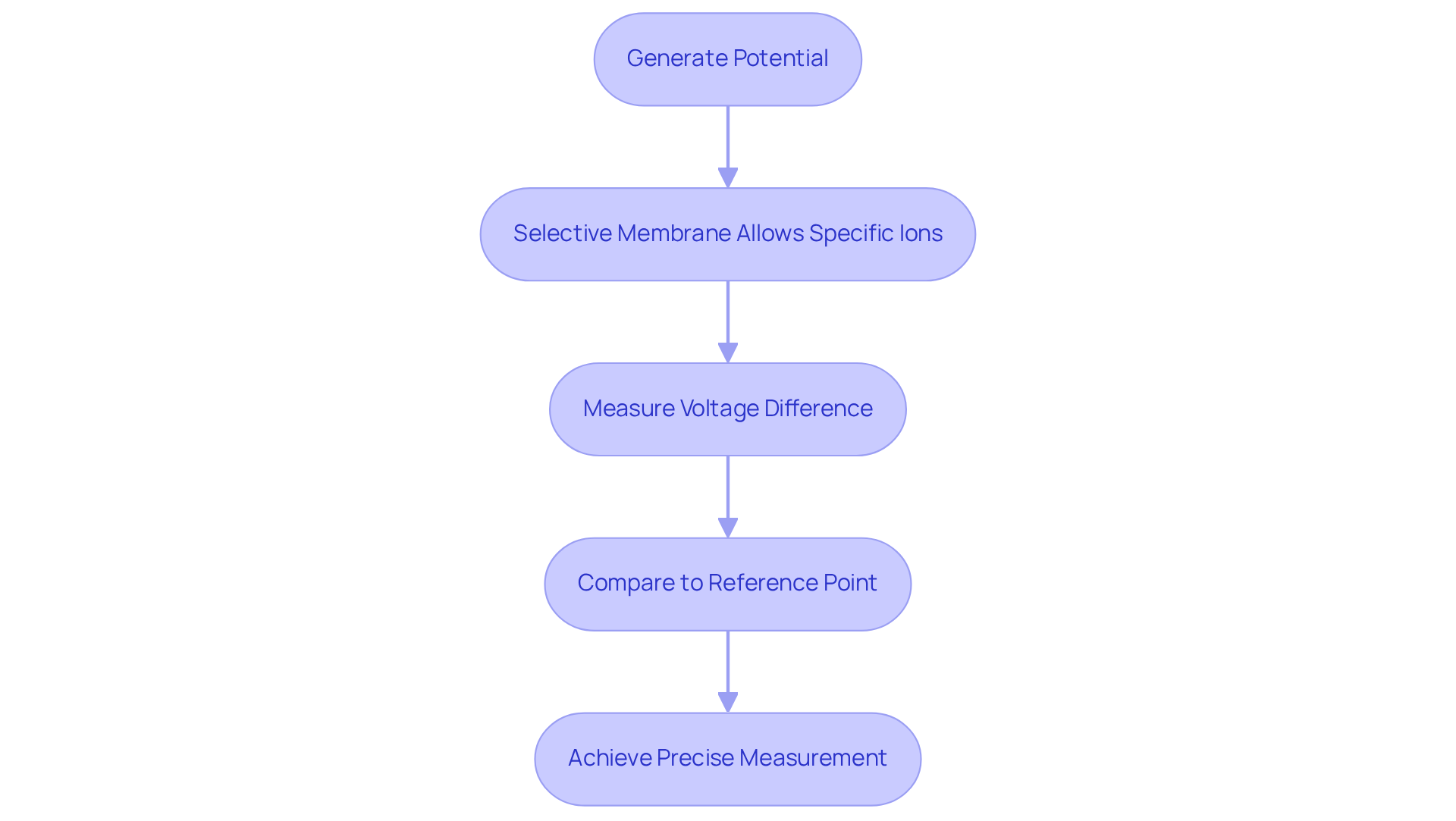
Types of Ion-Selective Electrodes: Exploring the Options
Ion selective electrodes encompass various types, each specifically designed for distinct applications and ions. The primary categories include:
- Glass membrane sensors
- Solid-state sensors
- Liquid membrane sensors
- Gas-sensing sensors
Glass membrane sensors are distinguished by their exceptional precision in pH measurements, utilizing a thin glass membrane that reacts to hydrogen ion activity. Their selectivity is particularly effective below pH 9, establishing them as essential tools in laboratory environments. In contrast, solid-state components are gaining popularity for their durability and simplicity, making them suitable for field applications where robustness is paramount. Notably, these components do not require an internal filling solution, enhancing their usability across diverse settings.
Liquid membrane sensors, frequently employed in pharmaceutical analysis, excel at measuring specific ion concentrations within complex matrices. Their capability to deliver rapid and accurate results is vital in quality control processes within the pharmaceutical sector. Recent advancements in ion selective electrodes technology have led to the development of miniaturized and multi-ion selective sensors, which expand the range of detectable ions and improve sensitivity.
Expert insights reveal that while glass membrane sensors provide high accuracy, solid-state devices present a compelling alternative due to their operational ease and reduced maintenance needs. As the market evolves, the demand for sophisticated ion selective electrodes continues to rise, driven by the necessity for precise ion measurement across various sectors, including environmental monitoring and healthcare.
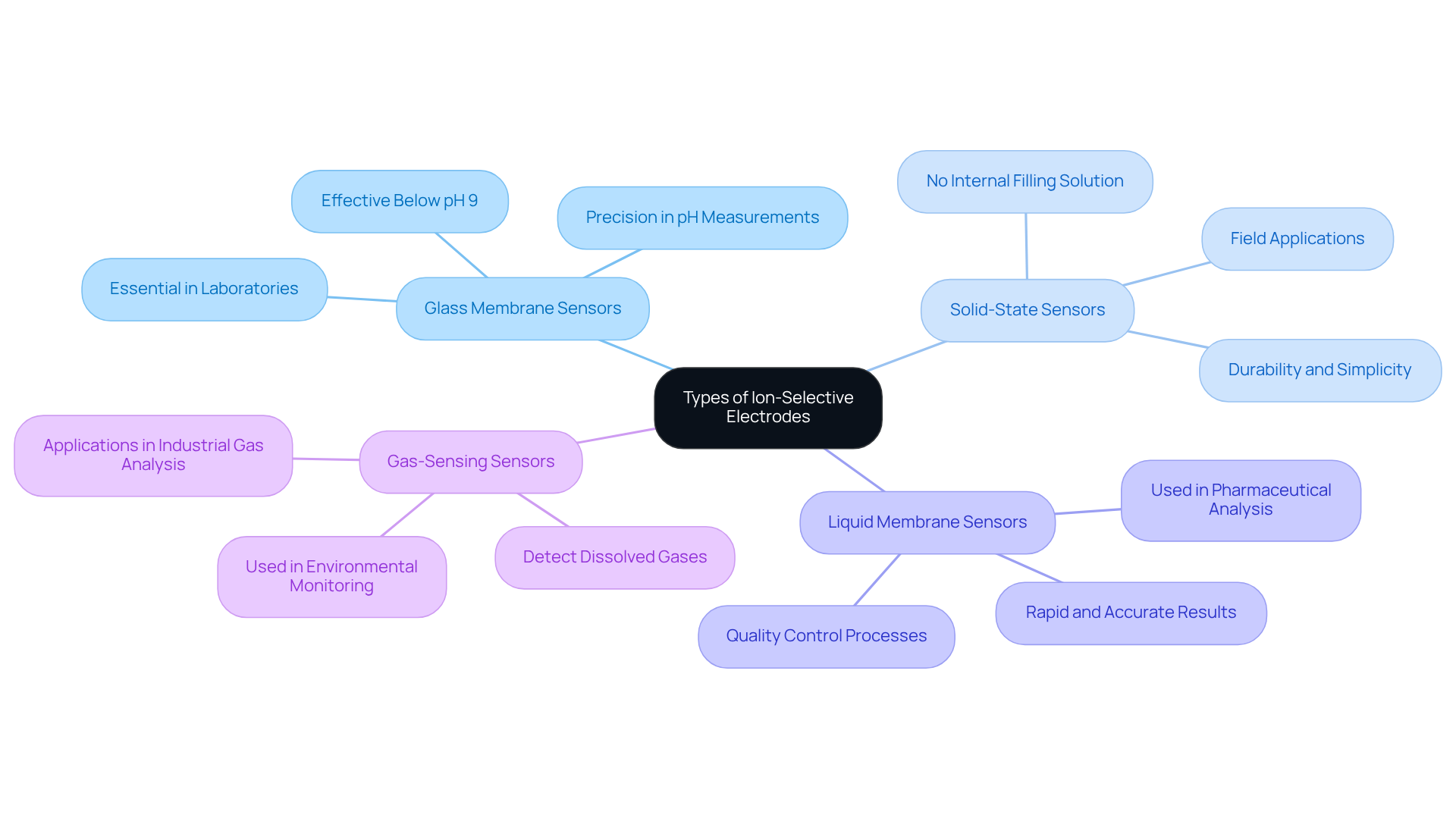
Applications of Ion-Selective Electrodes: Where They Are Used
Ion selective electrodes (ISEs) play a vital role across a spectrum of applications, including environmental monitoring, clinical diagnostics, food safety testing, and pharmaceutical analysis. In the realm of environmental monitoring, ion selective electrodes (ISEs) are essential for assessing water quality, with the water treatment sector accounting for approximately 60% of the ion selective electrodes market, generating around $150 million in annual revenue. Their accuracy in measuring ion concentrations facilitates effective pollutant monitoring, ensuring adherence to stringent regulations. Notably, the U.S. Environmental Protection Agency anticipates a 5% annual growth in the water quality testing market, which directly influences the demand for ion selective electrodes used in evaluating pollutants like nitrates and phosphates.
In clinical diagnostics, the use of ion selective electrodes (ISEs) is pivotal for determining electrolyte levels in blood samples, thereby supporting patient care and drug development. The global ion selective electrodes market is projected to reach USD 1.32 billion by 2024, with the pharmaceutical sector accounting for about 25% of this market. Innovations in conductive materials and integration with IoT technologies are enhancing their performance, allowing for real-time monitoring and improved healthcare delivery. As industry specialists assert, "Key growth drivers include rising demand for accurate ion assessment in water treatment, healthcare diagnostics, and industrial processes."
Food safety testing also benefits from ion selective electrodes technology, as these sensors ensure compliance with safety standards in food products. Their capability to deliver rapid and precise measurements is crucial for quality control within the food and beverage industry, which constitutes roughly 20% of the ISE market share. In summary, the versatility and reliability of ion selective electrodes make them indispensable tools across multiple sectors, propelling advancements in safety and quality assurance.
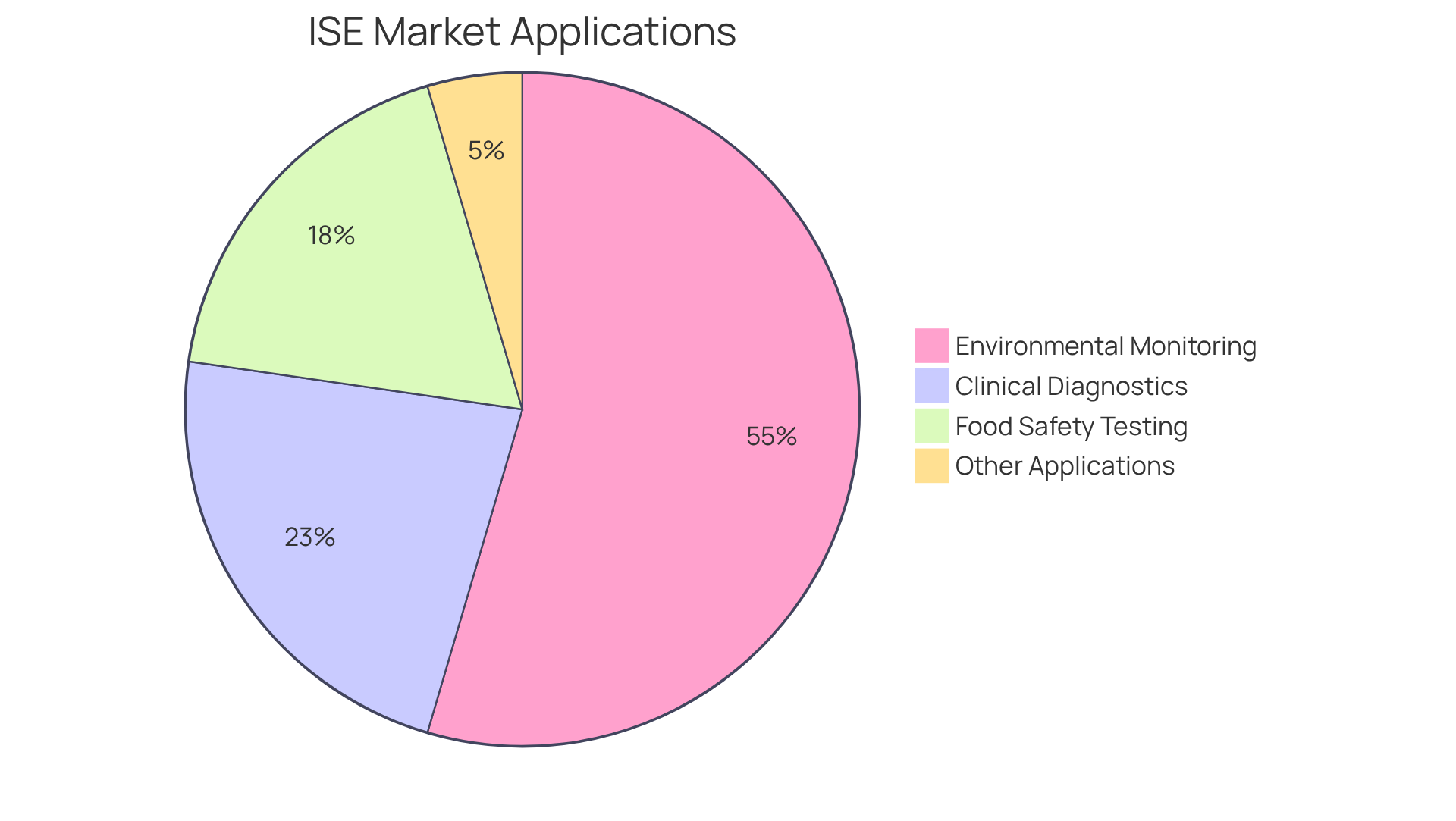
Advantages of Ion-Selective Electrodes: Benefits for Laboratories
Ion selective electrodes provide significant advantages in laboratory environments, particularly due to their exceptional selectivity and rapid response times. These ion selective electrodes are skilled at measuring ions within complex matrices, effectively minimizing interference from other substances. Their user-friendly design necessitates minimal sample preparation, rendering them ideal for routine analyses in clinical and pharmaceutical settings.
For instance, integrated systems can yield results in as little as 2-3 seconds for drugs such as diclofenac and 4-6 seconds for lidocaine hydrochloride, which is crucial for timely decision-making in clinical laboratories. Furthermore, continuous monitoring capabilities augment their utility, especially in dynamic environments like wastewater treatment facilities.
Expert opinions underscore that the accuracy and reliability of ion selective electrodes make them indispensable for routine analyses, with Nimisha Jadon affirming, 'Thanks to these benefits, utilizing ion selective electrodes is a significant choice in drug analysis.'
Correlation analysis further demonstrates a robust relationship between ion selective electrodes and colorimetric methods, evidenced by a correlation coefficient of 0.9931 for potassium assays, reinforcing their credibility. However, it is essential to recognize that each ion selective electrode is designed for a single ion, which can pose limitations.
Ultimately, the integration of these systems into laboratory practices not only streamlines workflows but also enhances analytical precision.
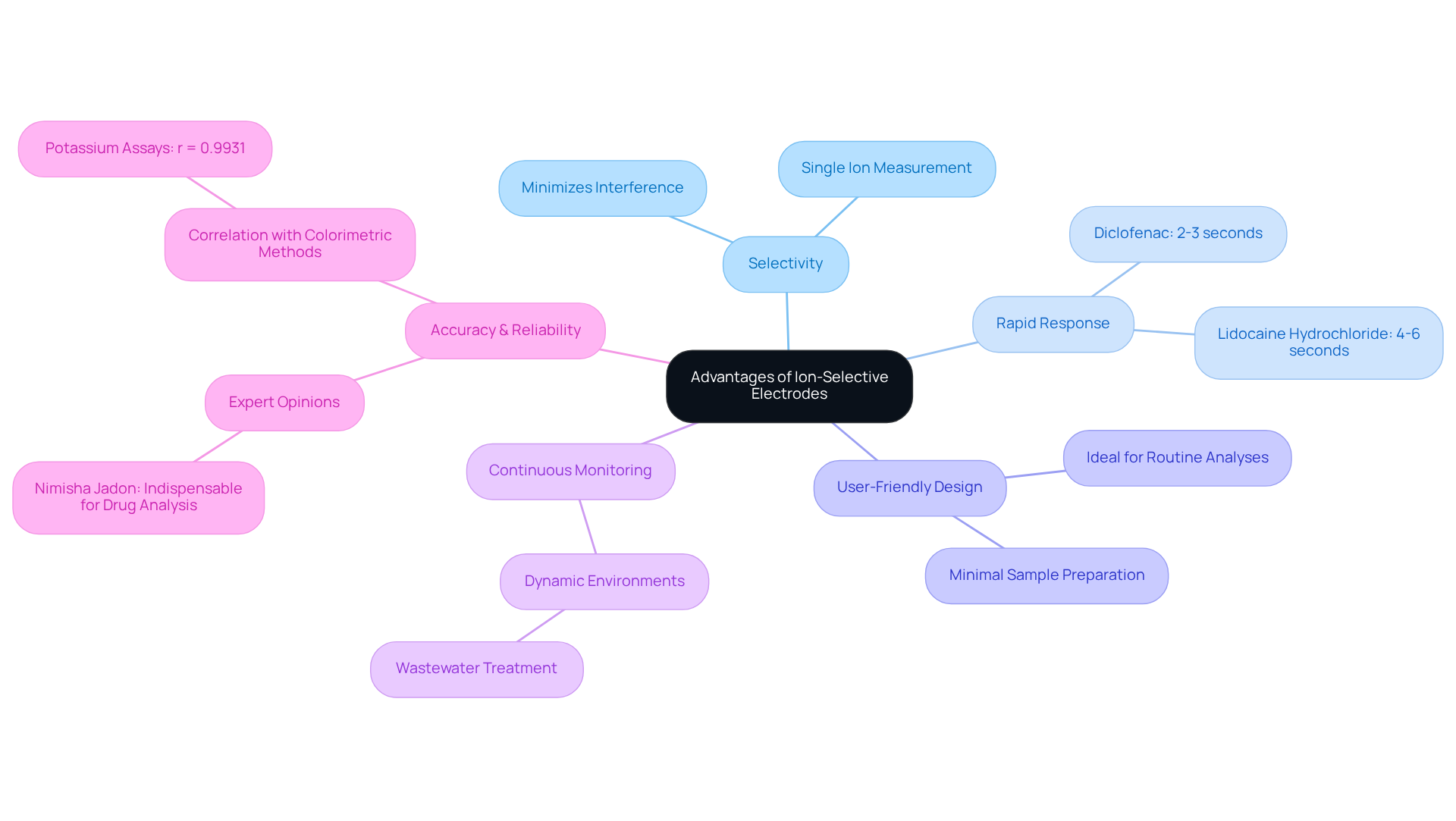
Limitations of Ion-Selective Electrodes: Challenges to Consider
Ion selective electrodes (ISEs) are invaluable tools in analytical laboratories, but they have inherent limitations that can affect their reliability. A significant challenge lies in their susceptibility to disruption from other ions present in the solution, which can lead to inaccurate readings. This interference requires meticulous management of ion concentrations to ensure accurate results. Furthermore, instrument systems demand regular adjustments to maintain precision, with research indicating that calibration should occur frequently to counteract potential drift in readings over time. For instance, the variation in integrated sensor electronics can average around 3 mV per 8-hour working day, which can considerably affect measurement precision if not monitored closely.
Environmental factors, including temperature, pH, and ionic strength, also play critical roles in the performance of ISEs. Fluctuations in these parameters can alter the electrode's response, complicating the calibration process. At elevated ionic strengths, for example, the activity coefficients may vary, resulting in substantial errors in concentration measurements. Laboratories must adopt strategies to mitigate these challenges, such as employing Ionic Strength Adjustment Buffers (ISAB) and ensuring that calibration standards closely align with sample conditions.
In conclusion, while ion selective electrodes provide numerous advantages for measuring ion activity, laboratories must remain vigilant about the challenges they present, especially regarding ionic interference and the need for consistent calibration to ensure reliable analytical outcomes.
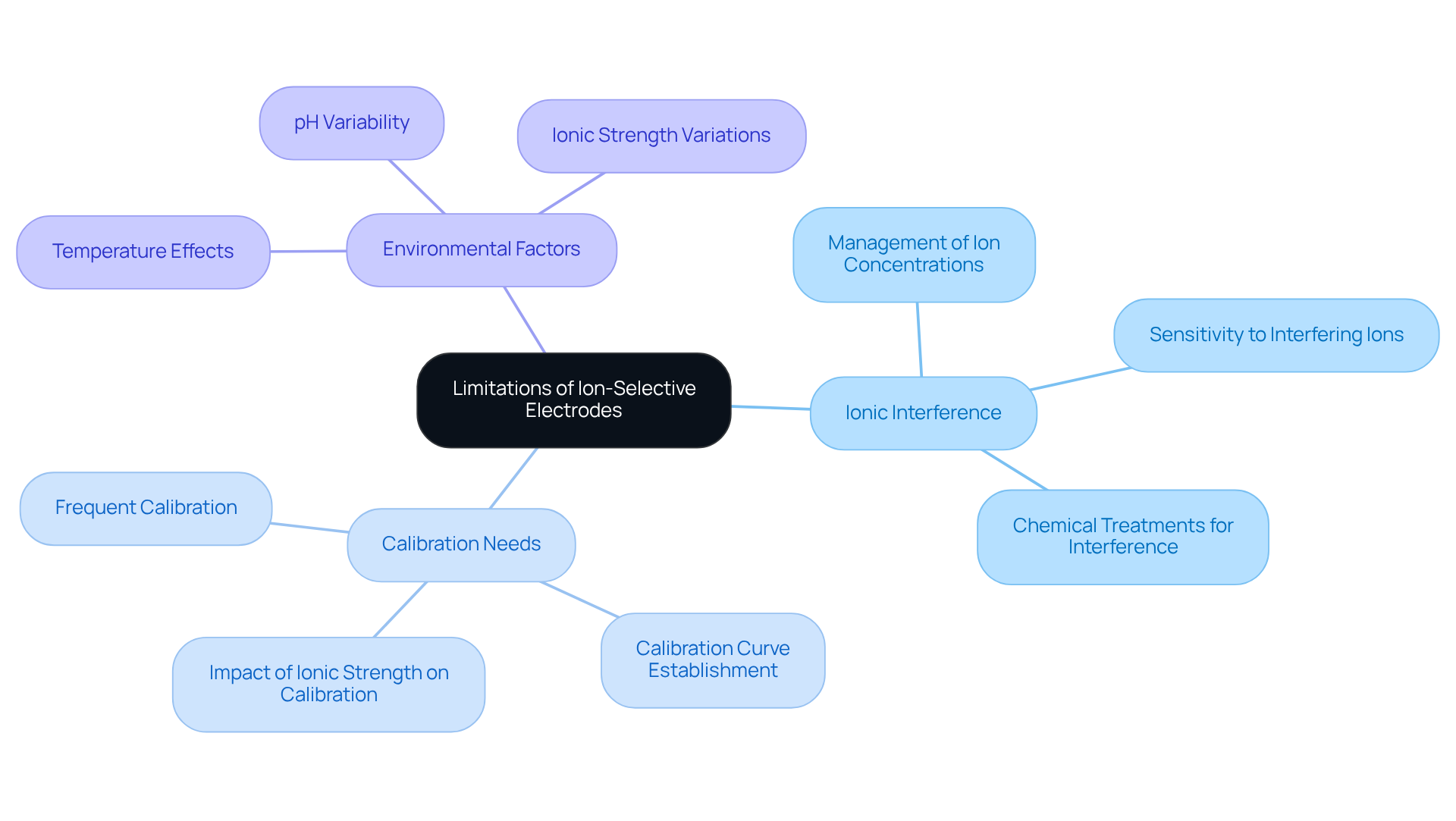
Calibration and Accuracy of Ion-Selective Electrodes: Ensuring Reliability
Calibration is essential for maintaining the precision of ion selective electrodes (ISEs). Establishing a routine calibration schedule is imperative, utilizing standard solutions that encompass the expected concentration range of the analyte. This routine calibration not only offsets potential drift in electrode response but also ensures that readings remain consistent and reliable over time. Research indicates that systematic calibration can significantly reduce uncertainty in readings, with variability in relative electromotive force (EMF) for self-calibrated sensors falling below 2.0 mV, marking a substantial improvement over traditional methods.
Employing effective calibration techniques, such as the standard addition method, further enhances the accuracy of results. This method enables direct assessment of matrix effects and provides a more precise reflection of the analyte concentration in complex samples. Expert opinions highlight the necessity of regular calibration, emphasizing that proper strategies can minimize errors and ensure compliance with regulatory standards. As Song S. Qian articulates, 'Calibration in analytical chemistry is crucial for ensuring the accuracy and reliability of measurements.' In 2025, the emphasis on calibration in information systems remains vital, as it directly affects data integrity and the reliability of analytical results in laboratory environments.
Moreover, laboratories should implement routine calibration schedules that include specific intervals and conditions tailored to their operational needs, thus ensuring optimal performance of their ion selective electrodes.

Ionic Interference in Ion-Selective Electrodes: Understanding the Impact
Ionic interference occurs when additional ions in a solution impact the response of ion selective electrodes, which can lead to inaccurate readings. Laboratories must recognize the potential for such interference and consider implementing ionic strength adjustment buffers (ISABs) to alleviate these effects. Moreover, selecting the appropriate ion selective electrodes tailored to the specific ions of interest can significantly minimize interference and improve the accuracy of results. By taking these proactive measures, laboratories can enhance the reliability of their analytical outcomes.
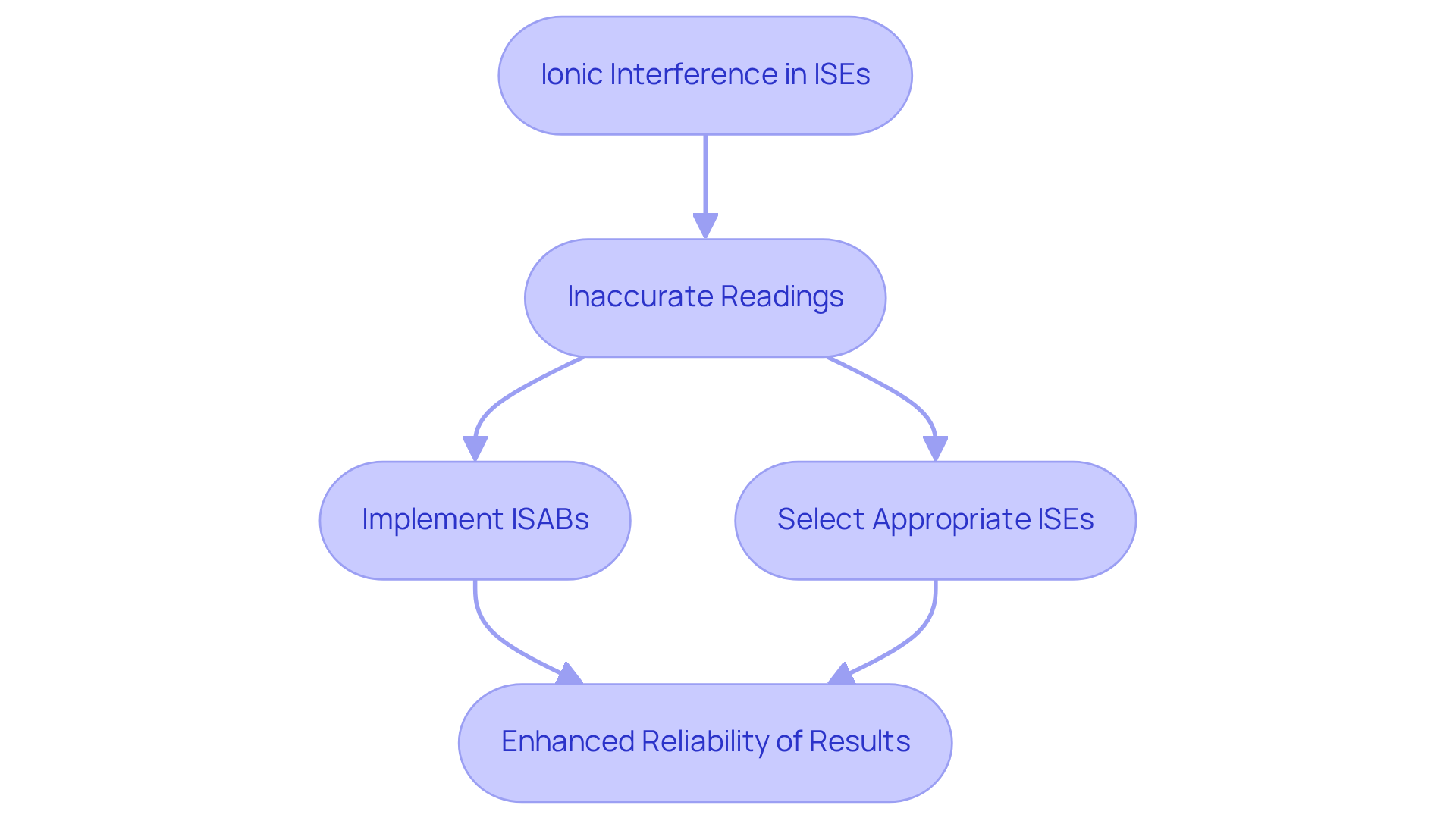
The Role of Reference Electrodes in Ion-Selective Measurements
Reference terminals serve as pivotal components in ion-selective systems, providing a stable reference potential essential for accurate measurements. Among the most prevalent types are silver/silver chloride (Ag/AgCl) and saturated calomel devices, each presenting unique characteristics that significantly affect their performance. Ag/AgCl sensors are preferred due to their stability and minimal leakage, whereas saturated calomel cells offer a well-defined potential, albeit with potential stability issues over time.
The stability and precision of the reference device are paramount, as they directly impact the reliability of ion selective electrodes measurements. Notably, solid-state composite (SSC) reference devices have demonstrated superior long-term stability and reproducibility compared to traditional commercial options. Research indicates that both CP SSC and IM SSC components exhibit excellent potential stability, with fluctuations generally confined within ±1 mV over extended durations.
Selecting high-quality reference devices and ensuring their proper maintenance is critical for laboratories aiming to achieve precise and dependable analytical outcomes. The DRIREF-450, designed for confined spaces and limited sample sizes, exemplifies a high-quality reference device that minimizes leakage and enhances accuracy. Its compact design facilitates effective application in environments where space is at a premium, making it an ideal choice for a variety of laboratory settings. Such advancements underscore the importance of stable reference devices in optimizing performance in ion selective electrodes measurements. Moreover, the influence of liquid junction potentials, along with the selection of appropriate junction materials and filling solutions, are vital factors that can significantly affect the efficacy of reference devices.
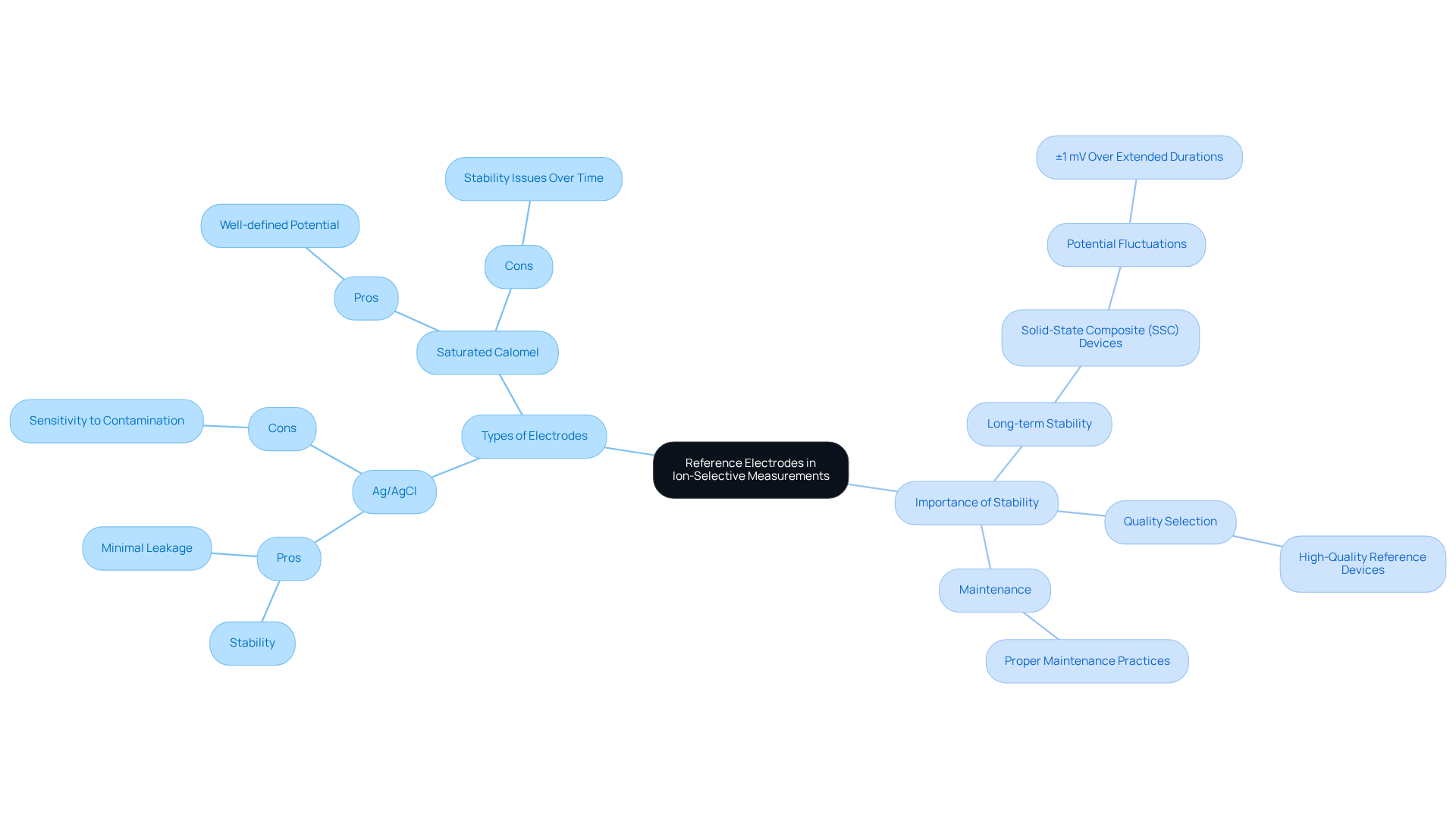
Future Prospects of Ion-Selective Electrodes: Innovations on the Horizon
The future of ion-selective sensors is exceptionally promising, driven by ongoing research aimed at enhancing selectivity, sensitivity, and miniaturization. Innovations such as solid-contact ion selective electrodes, which utilize advanced materials for superior performance, are gaining significant traction. These electrodes are increasingly being integrated with nanomaterials, thereby broadening their application across various domains, including environmental monitoring and clinical diagnostics.
Moreover, the incorporation of digital technologies and sophisticated data analysis tools is set to improve user-friendliness, facilitating their adoption in everyday laboratory settings. Real-world instances illustrate the efficacy of ion selective electrodes in precisely measuring ion concentrations in complex samples, highlighting their escalating importance in meeting stringent regulatory standards.
As these advancements continue to unfold, stakeholders can expect a transformative shift in the capabilities and applications of ion selective electrodes.
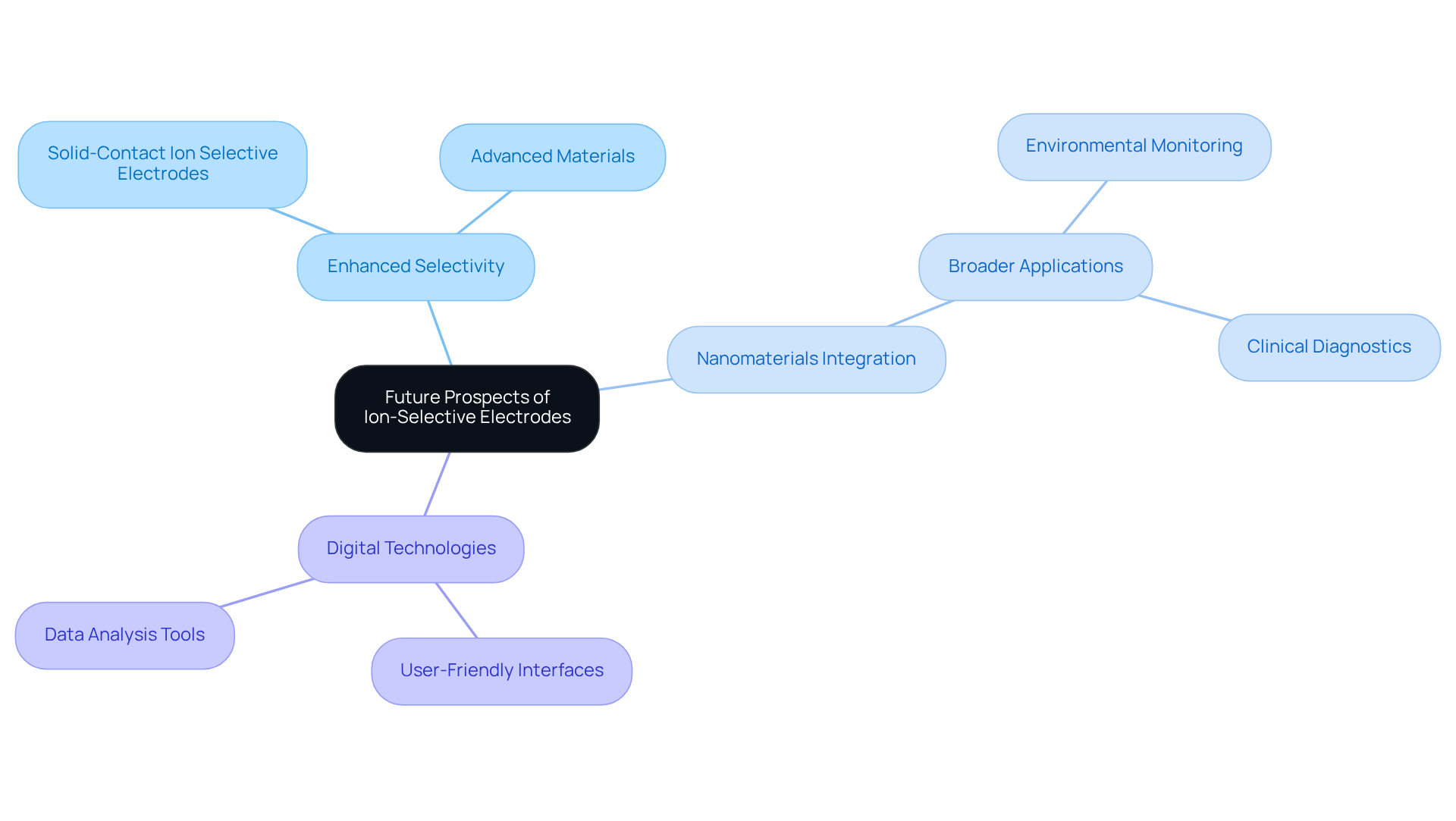
Conclusion
Ion selective electrodes (ISEs) serve as essential instruments in laboratories, delivering precise measurements crucial for a myriad of applications, ranging from environmental monitoring to pharmaceutical analysis. Their capacity to provide reliable data is rooted in advanced technology and stringent quality control, rendering them indispensable for researchers who prioritize accuracy in their work.
This article has shared key insights into the functionality, types, applications, and benefits of ion selective electrodes. The discussion underscored the significance of calibration and the challenges posed by ionic interference, alongside the critical role of reference electrodes in ensuring measurement reliability. Moreover, innovations in the field—such as miniaturization and integration with digital technologies—promise to enhance the performance and usability of ISEs across diverse settings.
As the demand for precise ion measurement escalates across various industries, it is vital to embrace the latest advancements in ion selective electrodes. Laboratories and researchers are encouraged to delve into these innovations to enhance their analytical capabilities, ensuring they remain at the forefront of scientific research and adhere to regulatory standards. The future of ion selective electrodes is indeed promising, and their evolution will play a significant role in advancing both research and practical applications in the years ahead.




